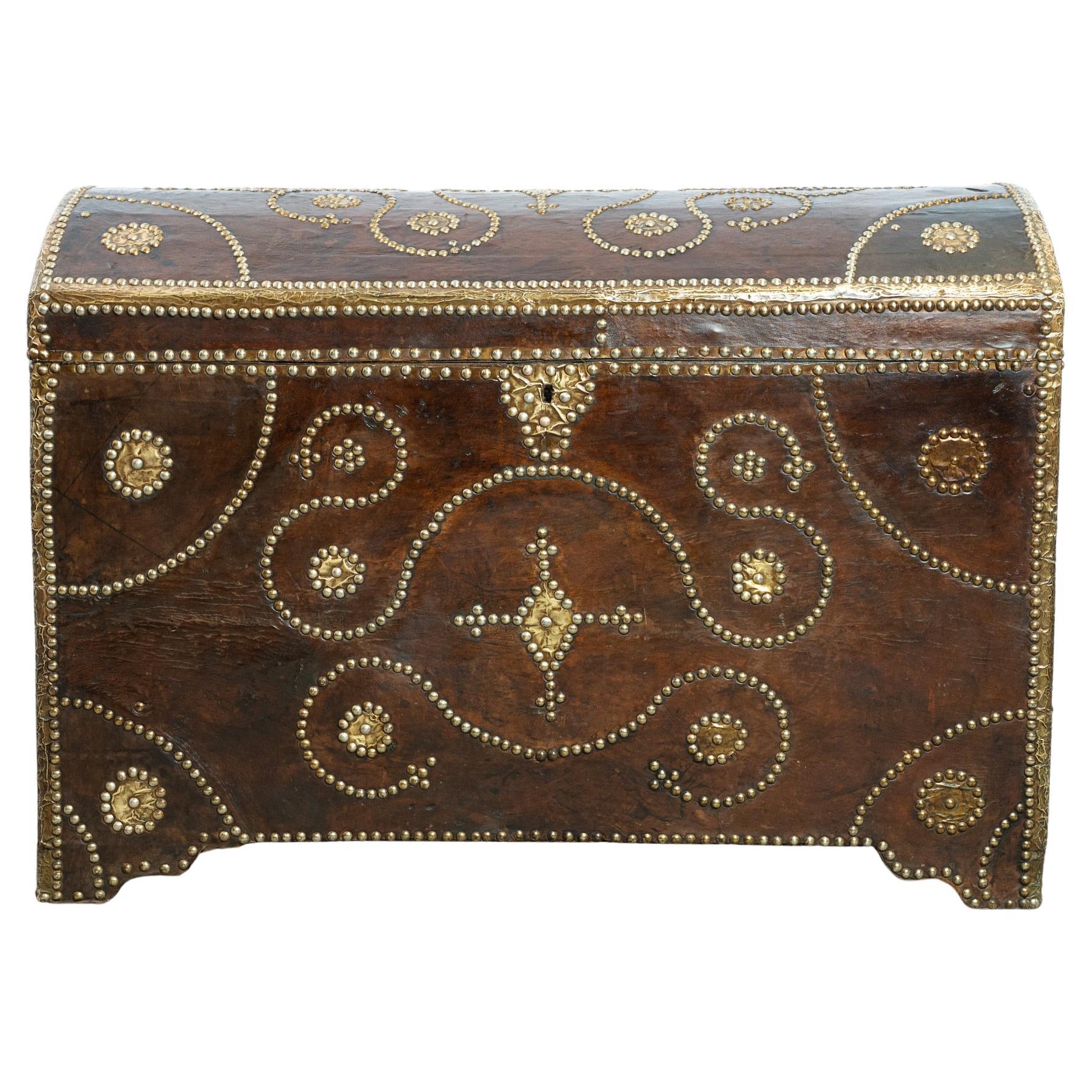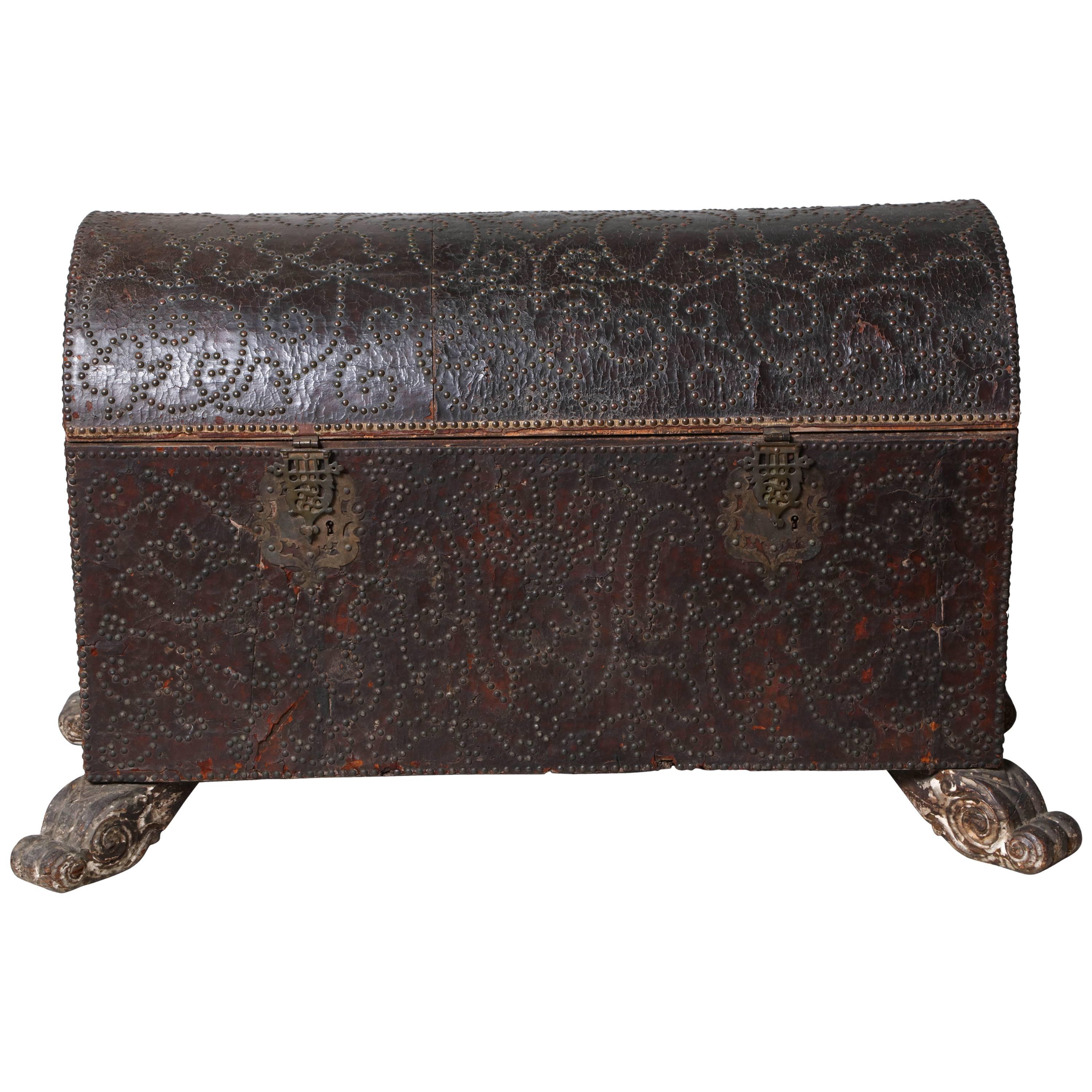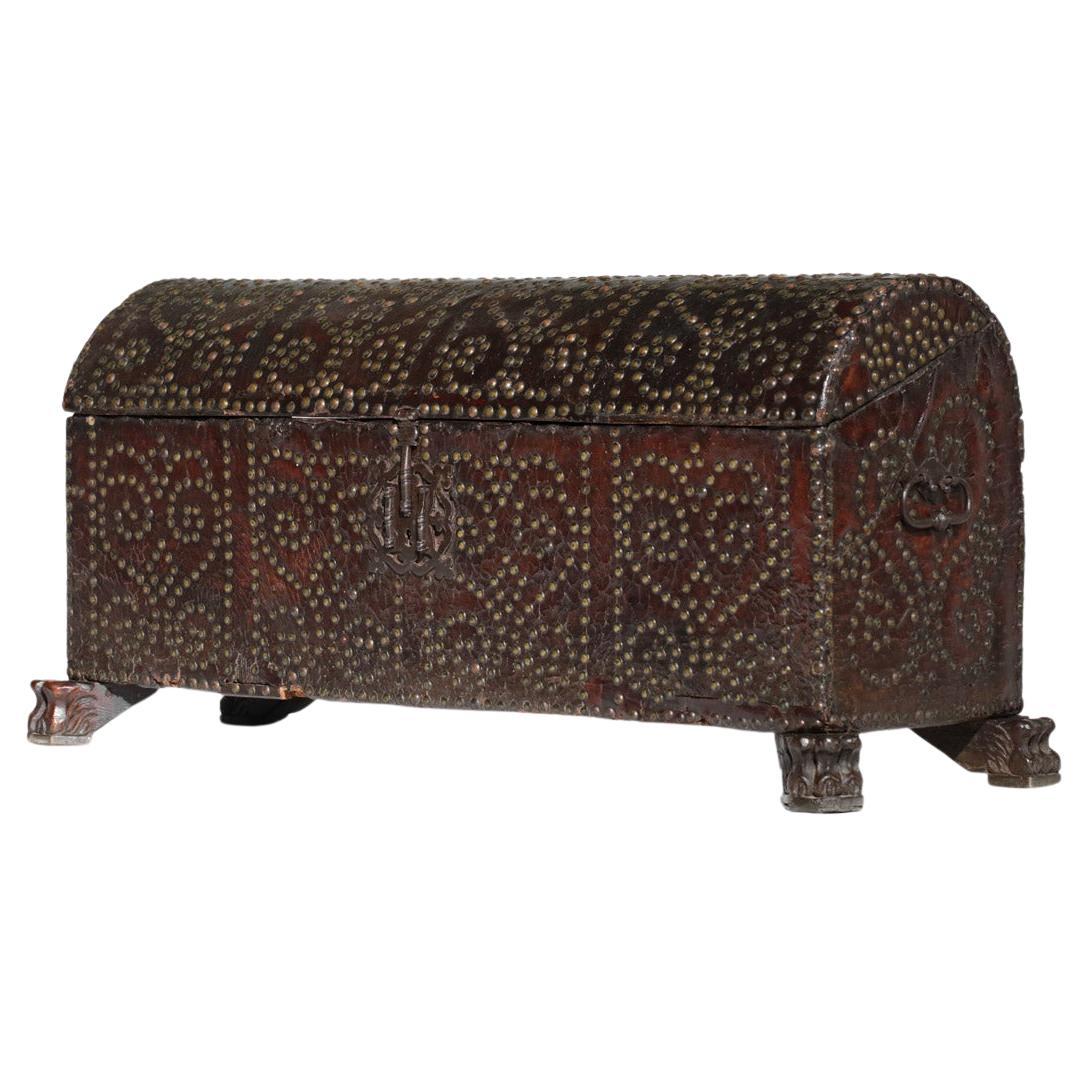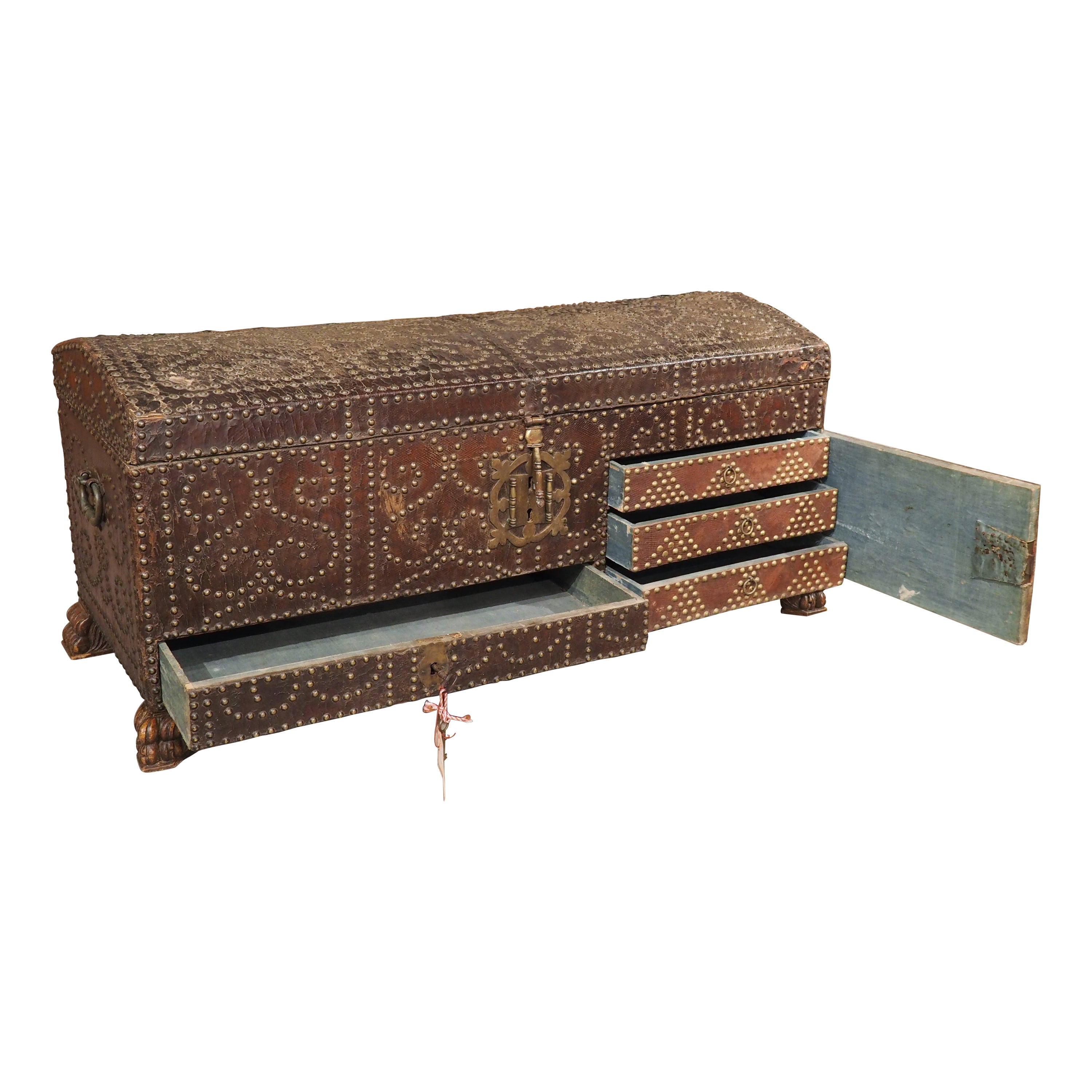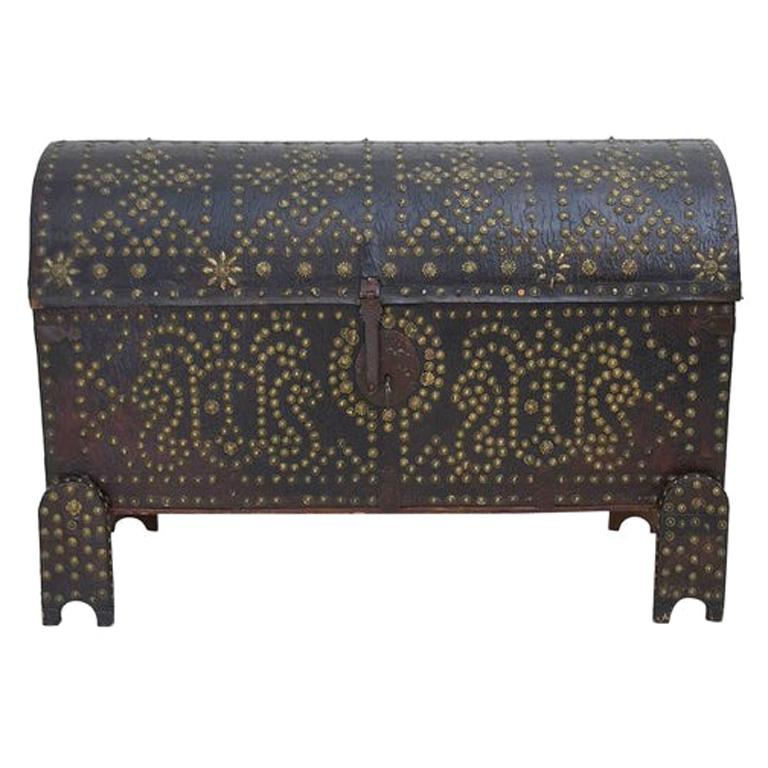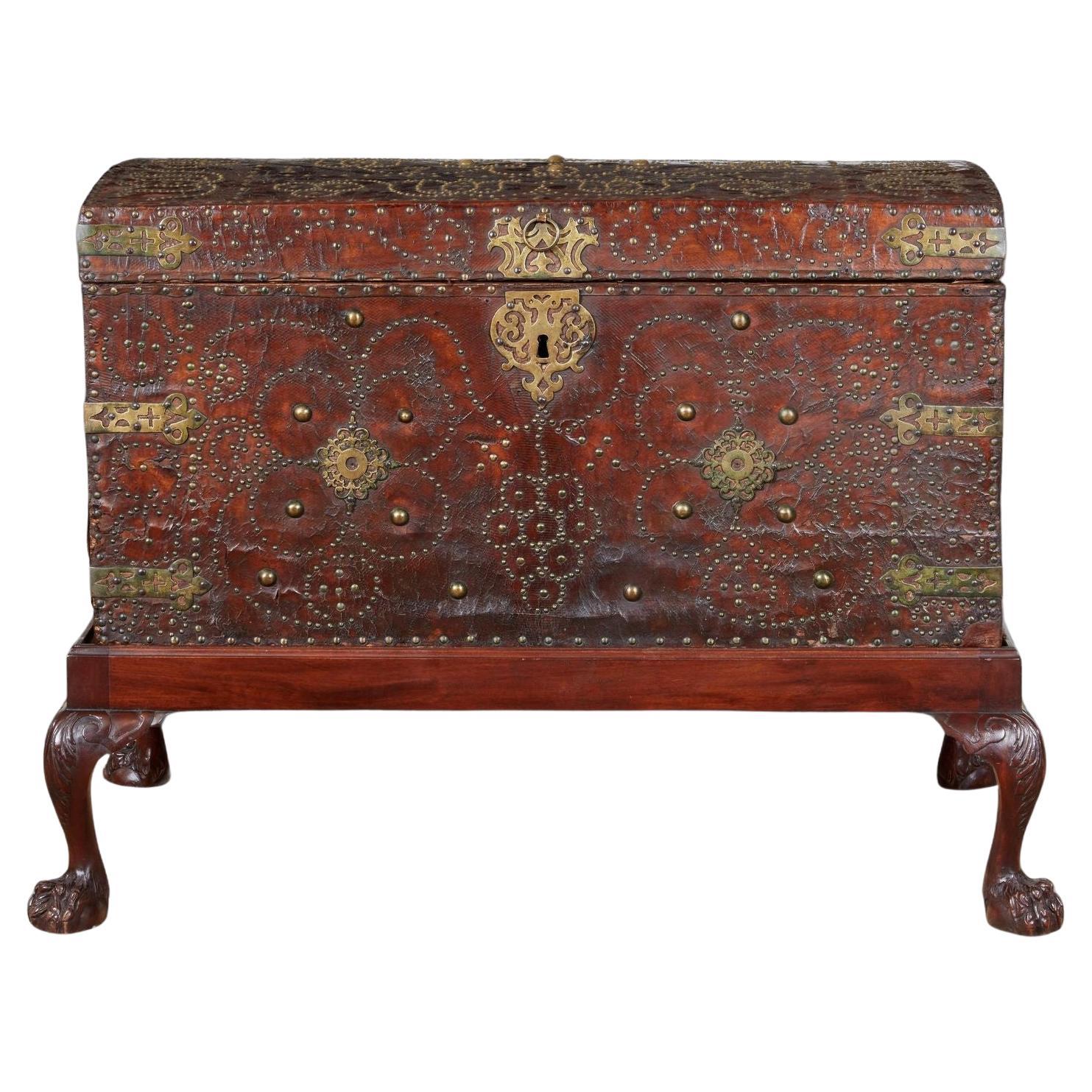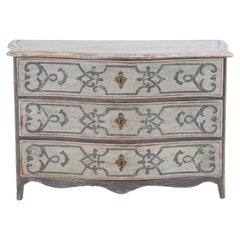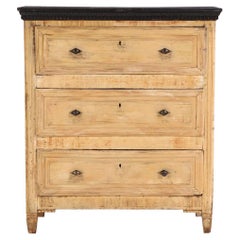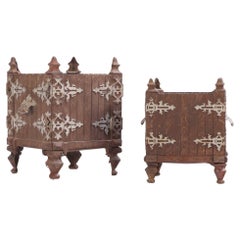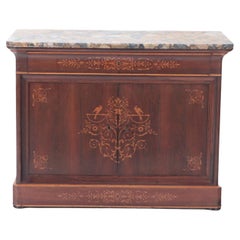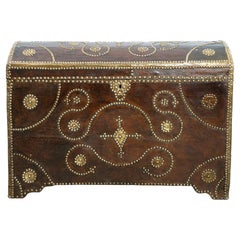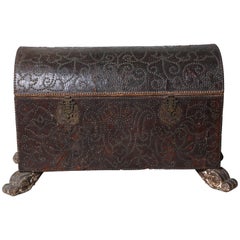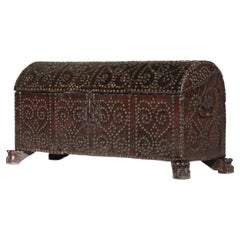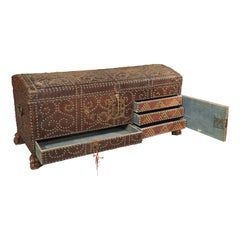Items Similar to A Spanish studded leather domed trunk, C 1870.
Want more images or videos?
Request additional images or videos from the seller
1 of 6
A Spanish studded leather domed trunk, C 1870.
$1,395
£1,064.32
€1,217.11
CA$1,965.85
A$2,143.55
CHF 1,137.56
MX$25,914.85
NOK 14,396.67
SEK 13,196.55
DKK 9,090.56
About the Item
Wrapped in a light shade of leather, the metal stud decoration stands out on a trunk raised on gothic arched wooden supports. It will look wonderful on a sofa table as a hiding spot for your treasures.
- Dimensions:Height: 22 in (55.88 cm)Width: 38.5 in (97.79 cm)Depth: 17.5 in (44.45 cm)
- Materials and Techniques:
- Place of Origin:
- Period:
- Date of Manufacture:1870
- Condition:Wear consistent with age and use. Overall good antique condition.
- Seller Location:Philadelphia, PA
- Reference Number:Seller: 27581stDibs: LU5630243599772
About the Seller
4.9
Platinum Seller
Premium sellers with a 4.7+ rating and 24-hour response times
Established in 2020
1stDibs seller since 2021
459 sales on 1stDibs
Typical response time: <1 hour
- ShippingRetrieving quote...Shipping from: Philadelphia, PA
- Return Policy
More From This Seller
View AllBaroque Commode / Chest of Drawers, 18th Century.
Located in Philadelphia, PA
This beautiful three-drawer commode dates to the 18th century (likely French) and has a subtle serpentine front façade. Each of the drawers and the sides are adorned with painted ara...
Category
Antique Late 18th Century French Baroque Commodes and Chests of Drawers
Materials
Wood, Paint
A French Pine Chest of Drawers with Painted Top, 19th C.
Located in Philadelphia, PA
This 19th-century French chest of drawers combines rustic simplicity with elegant presence. Crafted from pine and painted wood, it features a black painted top (later) and Empire-sty...
Category
Antique 19th Century French Dressers
Materials
Pine
Two French cast iron tabletop planters, C. 1880.
Located in Philadelphia, PA
These jardinières are of an orangier planter form with ornate faux hinge detailing, handles and corner finials.
Smaller planter- Ht: 11.5", Wd: 10", Depth: 8.5".
Category
Antique Late 19th Century French Planters and Jardinieres
Materials
Iron
$1,295 / set
A French Charles X Inlaid Rosewood, Marble Top Commode, C. 1850.
Located in Philadelphia, PA
Refined and richly figured, this commode features a marble top above a concealed drawer in the apron, over a pair of cupboard doors opening to reveal three interior drawers. The case...
Category
Antique Mid-19th Century French Charles X Commodes and Chests of Drawers
Materials
Marble
A French Leather-Clad End Table, C. 1935.
Located in Philadelphia, PA
A distinctive French end table featuring an octagonal leather-covered top with brass tack accents, supported by four turned spindle-style wooden uprights. The supports are united by ...
Category
Early 20th Century French Side Tables
Materials
Brass
French Empire Style "Somno" Mahogany Pedestal Bedside Cabinet, 1870
Located in Philadelphia, PA
An empire style, cylinder shaped "somno" mahogany pedestal bedside cabinet with original marble top and closed door offering an interior storage space on three claw feet legs.
Beau...
Category
Antique 1870s French Cabinets
Materials
Marble
You May Also Like
19th Century French Studded Leather Dome Top Chest
Located in Southampton, GB
A large Studded Leather Dome Top Chest.
Original studdded decorative motif and brass banding.
We can support with re lining if required.
Trunks like this would have been used to stor...
Category
Antique 19th Century French Blanket Chests
Materials
Brass
18th Century Spanish Studded Leather Chest
Located in Greenwich, CT
Very good Spanish 18th century studded leather chest, the domed lit with Arabesque design stud work, the front with two pierced brass clasps and ...
Category
Antique Early 18th Century Spanish Baroque Blanket Chests
Materials
Brass
19th Century Trunk in Studded Leather and Solid Wood
Located in Ternay, Auvergne-Rhône-Alpes
Chest, trunk of the 17th century in a medieval style, work of art craftsmanship. Solid wood structure covered with leather completed by a precision work with the decoration on the whole trunk made with nails. Very nice detail of carving at the feet in the form of paws. Bet vintage...
Category
Antique Mid-18th Century French Medieval Trunks and Luggage
Materials
Metal
18th Century Spanish Studded Leather Trunk with Lockable Compartments
Located in Dallas, TX
With two lockable compartments on the front façade, this studded leather trunk is a very unique storage piece. Hand-crafted in Spain during the 1700s, the trunk is well-engineered, w...
Category
Antique 18th Century Spanish Trunks and Luggage
Materials
Metal, Brass
Antique 18th Century Spanish Leather Trunk with Decorative Nailhead Detailing
Located in Madrid, ES
An excellent example of the classic dome top Spanish "arcón" or travel chest / trunk. Constructed of wood, the exterior is completely covered in a dark brown leather and the top and front feature studded brass nails arranged in decorative patterns. The nailheads themselves are decorated with raised star shape. The functioning lock mechanism (key included), hasp and side carry handles are original and made of wrought iron. Included are a pair of matching studded leather "feet" or supports which raise the trunk off of the floor allowing air to circulate, thus protecting the bottom from moisture. A solid and useable trunk...
Category
Antique 18th Century Spanish Spanish Colonial Trunks and Luggage
Materials
Wrought Iron
George I Studded Leather Trunk on Stand
Located in Greenwich, CT
Fine George I period studded leather travel trunk, dated 1723, on stand, the domed lid studded with brass and iron tacks in a foliate and vine pattern, with the initials "I.M." and "...
Category
Antique 1720s English Trunks and Luggage
Materials
Leather
More Ways To Browse
Spanish Leather
Studded Furniture
Studded Leather Antique
Metal Trunk
Antique Metal Trunk
Antique Gothic Trunk
Domed Trunk
Spanish Leather Trunk
Spanish Leather Box
Silver Filigree Box
Silver Filigree Boxes
Silver Spice Box
Sterling Silver Antique Pill Boxes
Straw Marquetry Box
Turtle Box
18th Century Wooden Boxes
Antique Brass Angle
Antique Dovetail Box
